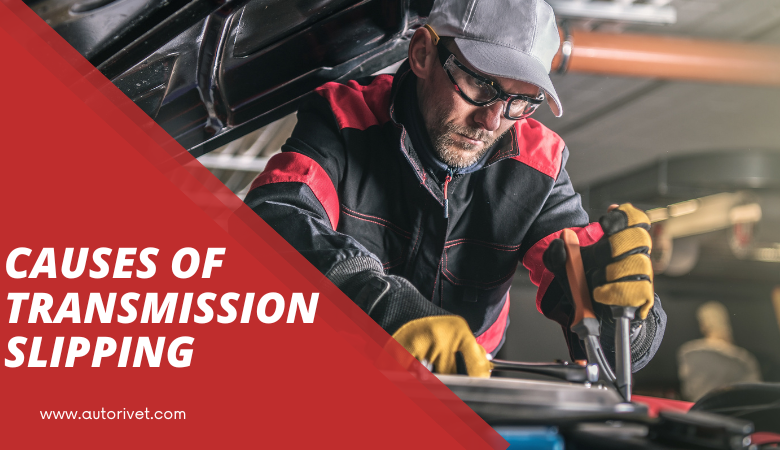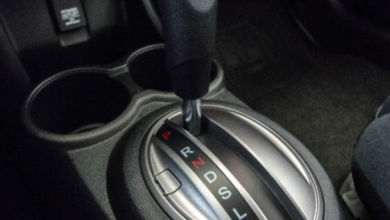Tranny Slipping: Common Causes You Must Know

What is Tranny Slipping?
Transmission slipping or tranny slipping refers to an issue within a vehicle’s transmission system where the gearbox unexpectedly changes gears or struggles to stay in the intended gear. Imagine you’re cruising down the road, and suddenly your car feels like it’s caught in a strange dance between gears, with a momentary loss of power or a noticeable surge in engine RPM that doesn’t correspond to your speed. That’s the perplexing sensation of transmission slipping. There are many causes of transmission slipping. Essentially, it’s akin to your car hesitating or momentarily disengaging from the chosen gear, creating a disruption in the seamless power transfer from the engine to the wheels.
At the heart of this problem is often the transmission fluid. Picture it as the lifeblood of your transmission, serving as a lubricant and hydraulic fluid that keeps the gears moving smoothly. When the transmission fluid levels are low, it’s like running your engine without enough oil – things start to heat up, friction increases, and slipping becomes a real risk. Regularly checking and maintaining optimal transmission fluid levels is a simple yet crucial preventive measure to keep your transmission running smoothly and avoid the annoyance of slipping gears.
7 Common Causes of Tranny Slipping
1. Low Transmission Fluid:
Low transmission fluid causes transmission slipping by compromising the lubrication essential for the smooth operation of various internal components. Inadequate lubrication results in increased friction and heat, leading to accelerated wear and reduced efficiency in gear engagement. Additionally, the transmission fluid serves a crucial role in cooling the transmission during operation, preventing overheating. Insufficient fluid levels hinder this cooling function, further contributing to the likelihood of slipping between gears. Regularly checking and maintaining optimal transmission fluid levels is essential to prevent these issues and ensure the proper functioning of the transmission.
2. Worn or Burnt Fluid:
Worn or burnt transmission fluid is a significant factor contributing to tranny slipping. Over time, the fluid can degrade due to high operating temperatures and extended use. As the fluid breaks down, it loses its lubricating properties and becomes less effective in providing the necessary hydraulic pressure for smooth gear shifts. The worn or burnt fluid fails to adequately coat and protect internal transmission components, leading to increased friction, heat, and wear. This degradation can result in delayed or inconsistent gear engagement, causing the transmission to slip between gears. Regular fluid checks and timely fluid replacements are crucial to maintaining proper lubrication and preventing the detrimental effects of worn or burnt transmission fluid.
3. Faulty Torque Converter:
A faulty torque converter is a key factor behind transmission slipping. The torque converter plays a pivotal role in transmitting power from the engine to the transmission, and any malfunction can disrupt this process. If the torque converter fails to properly engage or experiences internal damage, it can lead to erratic gear changes and slipping. The torque converter contains a stator, impeller, and turbine, and any issues with these components can impact its ability to transfer power smoothly. Addressing torque converter problems, such as internal damage or wear, is essential to prevent slipping issues and ensure a seamless transfer of power within the transmission system. Regular maintenance and prompt repairs are crucial for preserving the functionality of the torque converter and preventing transmission slipping.
4. Worn Clutch Components:
Worn clutch components can be a significant cause of transmission slipping or tranny slipping, particularly in vehicles with manual transmissions. The clutch is responsible for engaging and disengaging the transmission from the engine, allowing for smooth gear changes. Over time, the clutch disc, pressure plate, and other related components can experience wear and tear. As these parts degrade, they may struggle to maintain proper friction and engagement, leading to slipping between gears. Signs of worn clutch components include difficulty shifting, a spongy clutch pedal, or a slipping sensation during acceleration. Regular inspections and timely replacement of worn clutch components are essential for preserving the integrity of the clutch system and preventing transmission slipping in manual transmissions.
5. Transmission Bands Issues:
Among many causes of transmission slipping, transmission band issues are a common culprit behind transmission slipping. Bands are essential components in automatic transmissions responsible for controlling gear changes by gripping onto the gears during shifts. Over time, these bands can wear out or become damaged due to constant friction and heat. When transmission bands lose their effectiveness, they fail to properly engage and hold the gears, resulting in a slipping sensation during acceleration or deceleration. Regular wear and tear, harsh driving conditions, or insufficient maintenance contribute to the degradation of transmission bands. Timely inspections and replacement of worn-out bands are crucial to ensure proper gear engagement and prevent the inconvenience of transmission slipping in automatic vehicles.
6. Clutch Cable or Hydraulic Issues:
Clutch cable or hydraulic issues can be a significant factor contributing to transmission slipping, especially in vehicles equipped with manual transmissions. The clutch system relies on the proper functioning of either a cable or a hydraulic system to engage and disengage the transmission from the engine. If there are problems with the clutch cable, such as stretching or fraying, or if the hydraulic system experiences leaks or malfunctions, it can disrupt the smooth operation of the clutch. As a result, the clutch may struggle to engage fully or disengage properly, leading to slipping between gears. Regular maintenance, including checking the condition of the clutch components and addressing any cable or hydraulic issues promptly, is essential for preventing transmission slipping in manual transmission vehicles.
7. Overheating:
Overheating is a significant factor that can contribute to tranny slipping. There are also many signs of transmission overheating. Excessive heat within the transmission can lead to a range of issues, causing damage to internal components and fluid degradation. High temperatures may break down the transmission fluid, reducing its effectiveness as a lubricant and causing it to lose its viscosity. As a result, the transmission may experience increased friction and wear, leading to slipping between gears. Overheating can be triggered by various factors, including towing heavy loads, driving in extreme conditions, or a malfunctioning cooling system. Regular maintenance, proper cooling system functioning, and avoiding conditions that promote overheating are crucial to prevent the adverse effects that high temperatures can have on the transmission and mitigate the risk of slipping issues.




